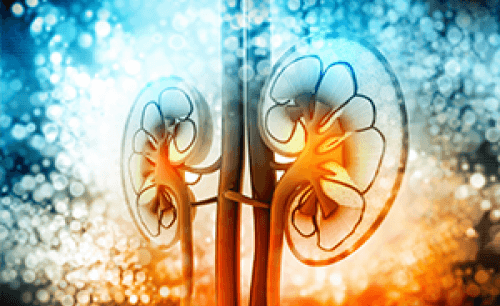Results of the DAPA-CKD study of dapagliflozin for the treatment of chronic kidney disease (CKD) have been presented at the European Diabetes Association’s Annual Meeting and simultaneously published in the New England Journal of Medicine. The sodium–glucose cotransporter 2 (SGLT2) inhibitor was found to significantly reduce CKD progression and mortality, irrespective of whether participants had type 2 diabetes or not.
A total of 4094 people with CKD (estimated glomerular filtration rate [eGFR] 25–75 mL/min/1.73 m2 and urinary albumin:creatinine ratio 23–565 mg/mmol) were randomised 1:1 to once-daily dapagliflozin 10 mg or placebo, in conjunction with standard care including a renin–angiotensin system blocker. The trial was ended early, after a median follow-up of 2.4 years, because of clear evidence of efficacy.
The primary outcome (a composite of ≥50% eGFR decline, end-stage renal disease or death from cardiovascular or renal causes) occurred in 9.2% versus 14.5% of the dapagliflozin and placebo groups, respectively (hazard ratio [HR], 0.61; 95% confidence interval [CI], 0.51–0.72). Each component of the primary outcome was significantly reduced in the dapagliflozin group. The benefits were consistent in both people with type 2 diabetes and those without.
All prespecifed secondary outcomes were significantly improved in the dapagliflozin group. Death from any cause occurred in 4.7% versus 6.8% in the two groups (HR, 0.69; 95% CI, 0.53–0.88). The number needed to treat to avoid one primary endpoint was 19.
Adverse and serious adverse event rates were similar in the two groups. Diabetic ketoacidosis (DKA) was not observed in any participant in the dapagliflozin group, and neither DKA nor severe hypoglycaemia was observed in any participants without type 2 diabetes.
Renoprotective effects for an SGLT2 inhibitor were previously shown in the CREDENCE study of canagliflozin. The present findings extend these benefits to people without type 2 diabetes. They also demonstrate that dapagliflozin is both safe and effective when initiated in people with an eGFR as low as 25 mL/min/1.75 m2.
The full study results are available here.






